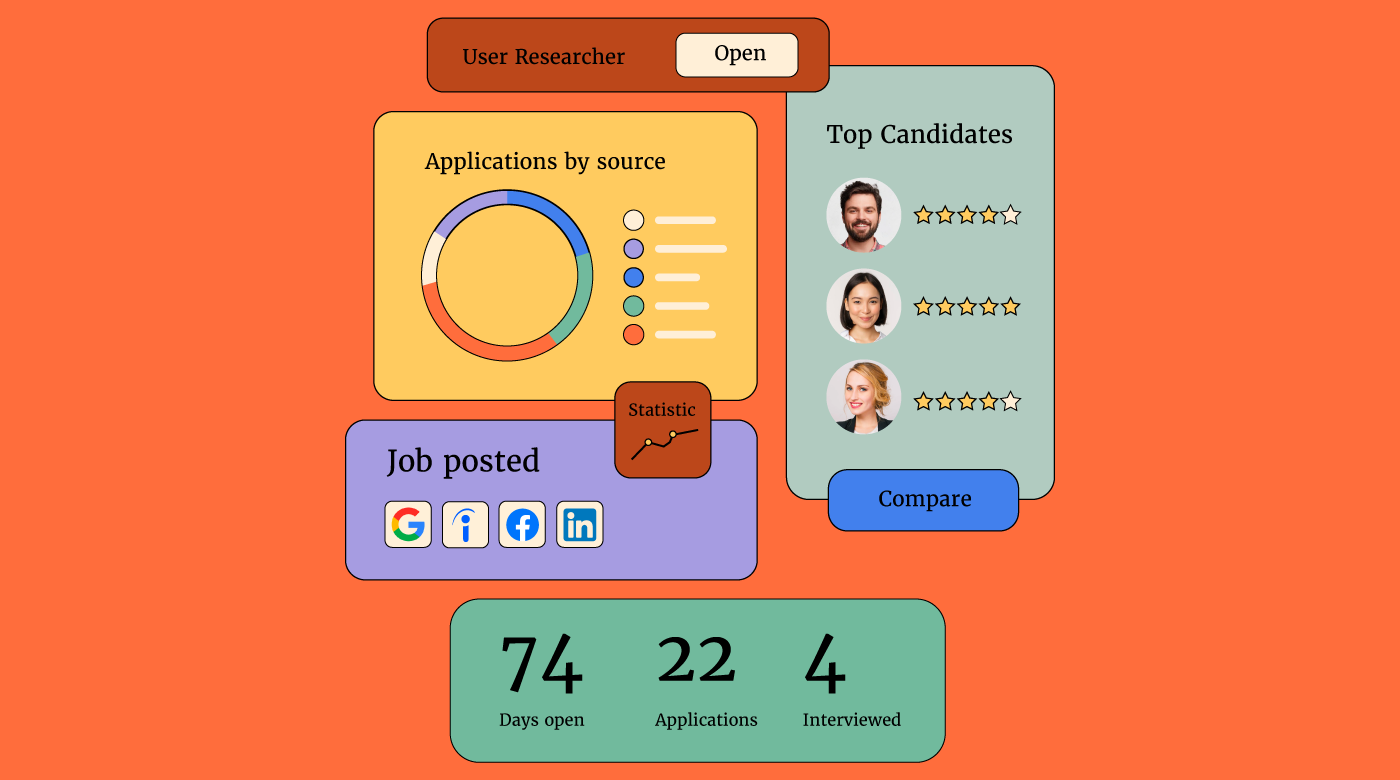Unleashing the Power of Data: Enhancing HR Techniques With Cutting-Edge Staffing Administration Software Application
By utilizing the power of information analytics, companies can not only boost their employment techniques yet likewise optimize employee retention and performance. The synergy in between data-driven understandings and advanced modern technology provides an engaging chance for HR experts to revolutionize their strategy in the direction of ability administration.
Importance of Data-Driven Human Resources Strategies
Why have data-driven human resources techniques come to be necessary in modern organization operations? In today's busy and competitive company setting, organizations are significantly relying on data-driven understandings to make informed decisions. Data-driven human resources strategies allow companies to enhance their labor force management, recruitment procedures, and employee engagement efforts. By analyzing data associated with staff member performance, turnover prices, and ability gaps, HR divisions can recognize trends, anticipate future requirements, and create proactive services to attend to obstacles.
Data-driven HR methods likewise play a critical duty in boosting staff member satisfaction and retention. Through the analysis of staff member responses, efficiency testimonials, and training end results, human resources experts can tailor individual development strategies, identify high-potential staff members, and promote a culture of constant learning and growth within the company. Data-driven insights enable Human resources teams to straighten their approaches with the general business purposes, making sure that skill management initiatives directly add to organizational success.
Benefits of Staffing Administration Software
Making use of staffing administration software enhances the recruitment and onboarding procedures for HR divisions, enhancing performance and accuracy in ability purchase. One substantial advantage of this software program is the capability to systematize candidate information, making it easily obtainable for recruitment groups. By having all candidate info in one area, HR specialists can efficiently track prospect progression, interact properly with potential hires, and make sure a seamless recruitment experience.
In addition, staffing monitoring software program often includes functions such as resume analyzing and search phrase matching, which assist in promptly recognizing top candidates that match the task demands. This automation lowers the time invested in manual resume evaluating, permitting human resources staff to concentrate on more tactical jobs. staffing management software. In addition, these systems can integrate with job boards and social networks systems, increasing the reach of job postings and drawing in a diverse swimming pool of prospects
In addition, analytics and reporting tools within staffing management software application supply beneficial understandings right into employment metrics, such as time-to-fill and cost-per-hire. This data-driven approach makes it possible for HR teams to make informed decisions, optimize recruitment techniques, and improve overall hiring processes. By leveraging these advantages, organizations can improve their talent acquisition efforts, enhance candidate experience, and ultimately construct a solid labor force.
Enhancing Employment Procedures With Data
By leveraging information, companies can make even more educated choices throughout the employment lifecycle, ultimately leading to far better hires and enhanced retention prices. One crucial way information improves employment processes is by maximizing task posts based on insights from previous successful hires.
Moreover, information analytics can streamline the testing and selection procedure by identifying patterns in prospect qualifications and efficiency these details indicators. This allows recruiters to focus their initiatives on candidates that are most likely to prosper in the role, saving time and sources. Furthermore, data-driven recruitment approaches can help in reducing bias in the working with process by offering unbiased understandings right into candidate credentials and potential fit within the organization. Generally, incorporating data into employment procedures empowers organizations to make smarter working with choices and build high-performing teams.
Improving Worker Retention Via Modern Technology

One way technology can enhance discover this employee retention is through making use of employee engagement systems. These systems permit real-time responses, acknowledgment, and communication between employees and management, fostering a society of admiration and assistance. Furthermore, innovation can enable personalized learning and growth programs customized to private worker needs and job desires, boosting task complete satisfaction and loyalty.
In addition, information analytics devices can aid companies determine fads and patterns associated with employee turn over, enabling them to take proactive actions to attend to potential concerns before they rise. Generally, by leveraging technology properly, organizations can develop a much more engaging and helpful work setting that encourages staff members to grow and remain within the company.
Taking Full Advantage Of Workforce Efficiency With Information

Via the evaluation of data, HR departments can determine patterns and fads that influence productivity levels. you could try here By tracking employee work hours and job completion rates, organizations can enhance job routines to make sure that jobs are successfully dispersed amongst group participants. Furthermore, information can expose ability gaps within the workforce, allowing human resources to implement targeted training programs that enhance employee capabilities and total productivity.
Furthermore, data-driven performance analyses make it possible for supervisors to give details responses and assistance to workers, fostering a culture of continual renovation. On the whole, leveraging information to make best use of labor force efficiency is a tactical approach that empowers companies to accomplish their goals efficiently and efficiently.
Conclusion
Finally, using advanced staffing management software program can significantly boost HR strategies by leveraging the power of information. By integrating data-driven recruitment procedures, boosting worker retention through modern technology, and making best use of labor force productivity, companies can improve their procedures, make more enlightened decisions, and inevitably accomplish greater success in handling their human capital. Accepting these technological improvements is important in the ever-evolving landscape of human source administration.
Data-driven HR methods enable companies to maximize their labor force management, employment procedures, and worker involvement efforts. By assessing data related to staff member efficiency, turn over rates, and ability spaces, HR departments can recognize patterns, predict future requirements, and develop proactive remedies to address difficulties.
